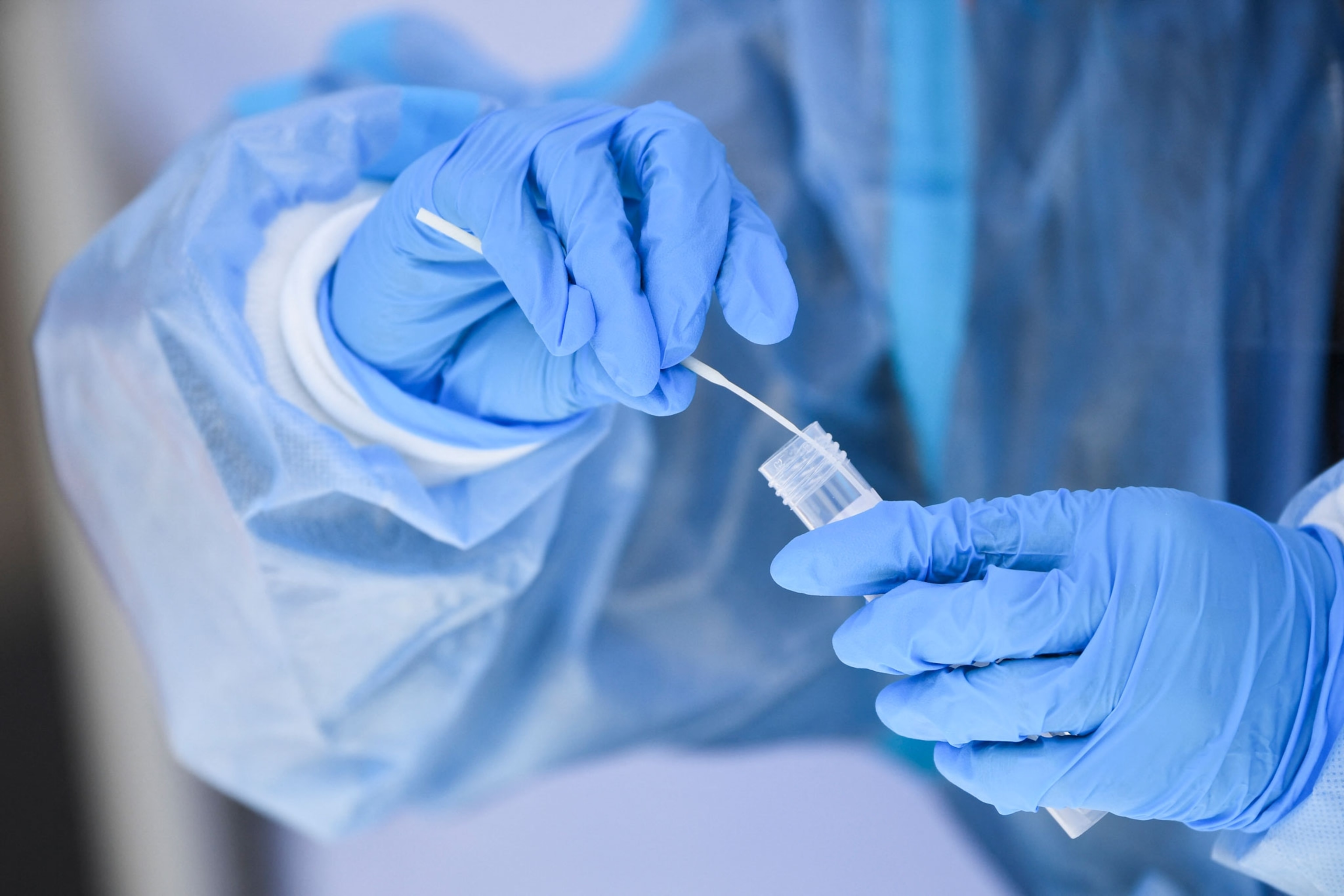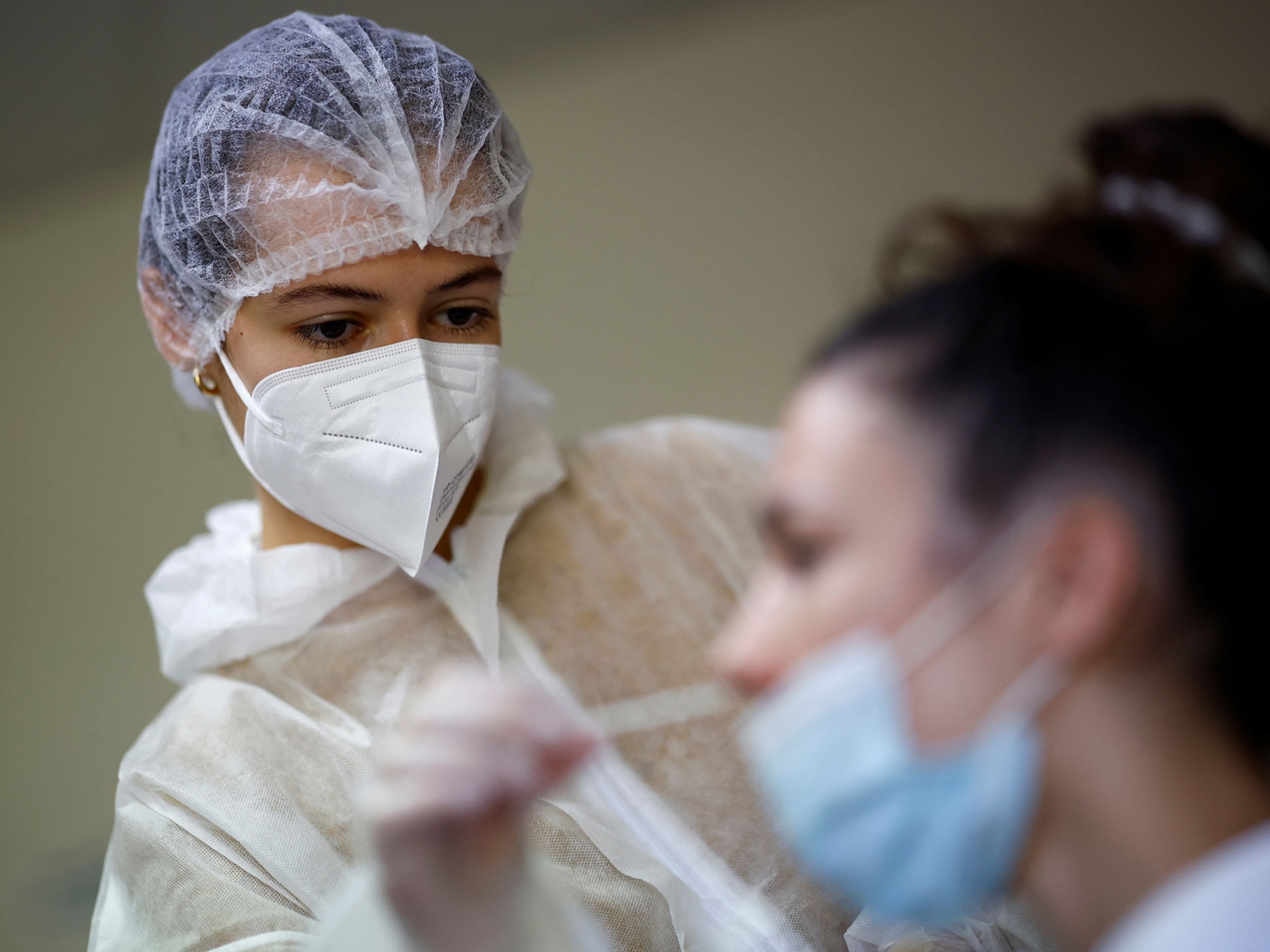
Why Omicron subvariants BQ.1 and BQ.1.1 are poised to take over in the U.S.
They now account for a tenth of the nation’s COVID-19 cases. Here’s why these strains are so good at evading immunity—and how the vaccines will protect against them.
As the United States braces for another wave of COVID-19, a surge in new Omicron subvariants has raised concern among scientists. The U.S. Centers for Disease Control and Prevention released data last week showing that BQ.1 and its sibling BQ.1.1 now account for more than 10 percent of the country’s cases, while BF.7 accounts for another 5 percent.
“Within a few weeks, things could look upside down,” says John Swartzberg, an infectious disease and vaccinology expert at the University of California, Berkeley School of Public Health. If the subvariants continue to spread at the same quick rate, either one or all three of them could overtake BA.5 as the nation’s most prevalent SARS-CoV-2 strain. (Globally, the horse race also includes worrisome contenders such as the Omicron subvariant XBB.)
What exactly are these variants and how are they different from those we’ve seen before? Here’s a rundown of what you need to know.
What are BQ.1, BQ.1.1, and BF.7?
The three Omicron subvariants that are currently surging in the U.S. are descendants of BA.5, which still accounts for about two-thirds of all cases in the nation. As National Geographic has previously reported, all Omicron sublineages are variants of concern because they share similar characteristics: They spread more easily than earlier variants and can dodge previous immunity. (What comes after Omicron? These new variants are emerging.)
Stuart Ray, an infectious disease expert at Johns Hopkins University, says that BQ.1, BQ.1.1, and BF.7 are particularly troubling because of some traits they have in common. These subvariants have each developed mutations in the same critical areas of the coronavirus’s protein spike receptor, changes that allow the virus to slip past the immune system’s antibodies.
Ray says this is an example of what’s called convergent evolution, which is when different organisms adapt in the same ways. “These changes in that region of spikes are happening in multiple separate lineages, suggesting that they really provide a big advantage,” he says. “Even though they’re evolving independently, they’re arriving at the same answers to the same questions.”
Are the new subvariants more severe?
Although it’s likely that these subvariants will be better at evading immunity, there’s little evidence to indicate they cause more severe disease than previous variants.
Scientists are concerned that these variants might also be able to evade the drugs that are used to treat people who are immunocompromised or otherwise susceptible to severe forms of COVID-19. White House chief medical adviser Anthony Fauci told CBS News that BQ.1.1. “seems to elude important monoclonal antibodies” used in treatments like Evusheld, which is designed to target the same position of the spike protein receptor that has mutated in the new subvariants. More data is needed to say for certain, however.
Ray points out that it’s hard to compare the severity of the subvariants emerging now to earlier strains because the levels of immunity are now different within the population. It’s entirely possible, for example, that these subvariants would have wreaked far greater damage if they had emerged before the COVID-19 vaccines were rolled out.
“If people don’t keep their immunity up through vaccination, then we may see increasing levels of severity,” he says. Even with mild illness, he adds, there’s also reason to be concerned about repeat infections, which are associated with cardiovascular, brain, and post-COVID complications. “Vaccination is the way to maintain that immunity, and our best bet right now is the bivalent vaccine.” (Here’s how multiple COVID-19 infections can harm the body.)
Do vaccines protect against the subvariants?
There’s no human data yet to confirm how well the bivalent vaccine—a new formulation of the original shots that specifically targets Omicron BA.4 and BA.5—will work against the subvariants. So why are experts so optimistic? White House COVID-19 Response Coordinator Ashish Jha explained in a media briefing last week that all three subvariants descend from BA.5 variant. (Six questions about the Omicron-targeting boosters, answered.)
“That means our updated bivalent vaccines should provide a much higher degree of protection than the original prototype vaccine would have,” he said. “Obviously, we’re going to do the studies to figure out how much protection, but I’m confident that our vaccines will continue to work very well, certainly protecting against serious illness.”
Philip Chan, an associate professor of medicine at Brown University, agrees that the new bivalent booster will be particularly helpful. But he adds that most experts still believe the original vaccines will continue to provide protection against severe disease and hospitalization—just as they have against variants that emerged throughout the pandemic.
What happens next?
Most experts say these new subvariants are yet another reminder of the importance of tools like vaccination and masking—and, in fact, those will be more important than ever if it turns out that monoclonal antibodies are not effective against the latest versions of the coronavirus.
“What these new mutations are telling us is that this virus is not done with us yet,” Swartzberg says. Although nobody can predict what this virus is going to do, he thinks it’s a safe bet that the U.S. will see a new surge in cases in the next six to eight weeks.
“I certainly do think that this quiet time we’re in right now is not going to last beyond Thanksgiving,” he says. “We should be doing everything we can to keep ourselves, and our families, and our community safe.”








